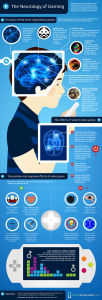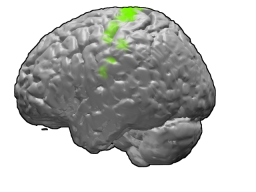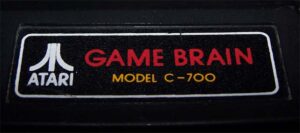Video Games and Spiritual Development, a preliminary analysis
Introduction
Video games are a huge global phenomenon, driving well over $70 billion dollars in sales in 2011—a number that is only rising year by year. For comparison, global music sales in 2011 was about $16 billion, while global theater tickets was about $33 billion. This has consequences—largely unexplored—for people that are interested in spiritual development. It is thus important to look at the phenomenon of video games from a spiritual perspective, because almost no one growing up today can avoid them. The time in which human beings could develop spiritually without the presence of modern technologies is essentially over, and video games are now deeply integrated into the fabric of modern society. Their ubiquity means that human beings who wish to undertake spiritual development will often do so in contexts that are not devoid of video games. We can thus ask the question, how might video games impact spiritual development?

A one-two endocrine punch
Right now video games—despite having come quite a long way—are still almost totally oriented towards stimulation of the astral body, and pay no real attention to the spiritual reality of the ego, let alone the ego’s task of transforming the astral body into a more pure state (spirit self). Video games are even more devious, however, in that the particular mode by which they call to our astral body such that they utilize the parts of the astral body that connect with the etheric body’s life processes. This is seen most directly seen in the way that games are designed to arouse particular endocrine responses through intense imagery sequences—and this is done in a very skillful way, utilizing a sort of one-two endocrine punch. On the one side is the fight/flight response and the release of tiny amounts of adrenaline (epinephrine), which is very stimulating and gives us a greater sense of being alive and capable; on the other is the reward response triggered through power-ups, leveling, treasure, and so forth, which stimulates the release of dopamine (involved in all reward-learning).
 Epinephrine
Epinephrine
So here’s the thing: the release of adrenaline in a more natural setting occurs when you need to mobilize your body for potential and immediate action (often involving gross motor movement and the large muscle groups, i.e. running). In the case of a video game none of this gross movement actually will occur, because you are basically just sitting in one spot. You consciously know that your body is not in danger (so you don’t actually run away), but your etheric body can’t make a distinction between real and false danger: it preps itself for action in both cases. Your ego has enough control over your body to keep it in front of the TV (more on this later), but not enough to keep it from releasing adrenaline, which up-regulates your heart rhythm, dilates your pupils, down-regulates your immune system and digestion, and increases oxygen and glucose absorption in the brain. The ego is then left with the residue of this activity, given to it through the astral body as it rides on the back of these powerful etheric processes.
And then comes the second punch: it is just at this moment, when the action comes to a momentary pause and there is no immediate cause for the continued release of adrenaline, that the game presents you with a reward of some kind, triggering a dopamine release and the activation of the reward-learning system in the brain. It is the timing of this one-two punch that is so powerful: by following at just the right moment, right when the (false) danger is removed, the activation of the reward centers has a correspondingly larger impact than were the response to occur without the previous fight/flight mobilization. In other words, the contrast between the activity of adrenaline and dopamine in the brain, when sequenced just so, yields a subjectively greater sense of the value of the reward than would otherwise occur; we overvalue the reward.
 Dopamine
Dopamine
This overvaluation gives the ego a hit, and makes it seem like all the intensity that accompanies the fight/flight response was not only “worth it,” but is something to repeat. The loop of attention is closed, and we are drawn forward to the next game conflict, having learned now to anticipate activation of the reward centers of our brain without ever having to actually meet any real danger, while having the sense of the danger, because your etheric body can’t say “no” to the effects of adrenaline. It is the rhythmic oscillation between these two sides of the endocrine response system that is problematic for spiritual development, because the rhythmic oscillation works in a way that could almost be described as ego-enslaving. The rhythm has power to it that the ego is not very capable of dealing with (because of the etheric nature of this rhythm), so it slides into the pattern and has a difficult time regaining its rightful place with respect to the astral body in particular, which is where the spiritual knot is in this case. The ego is meant to develop so as to be the initiator and dissolver of astral activity, but because this activity gets linked to a rhythm in the etheric body, the ego loses its hold and gets swept up in the drama of the etheric body. It becomes more of a passive spectator and relinquishes its potential to be a creatively free with respect to the astral body.
To take it further, the important thing about video games is that all of this activity takes place through the linking of two very important phenomena, both significant when thinking about this question in the context of spiritual development: imagery and fine motor control. Let us look at images first.
Video games, imagery, the astral body and the ego
The astral body is the symbolizing body. When thinking about spiritual development, the most important thing is to make sure that the images that the astral body encounters are spiritually nourishing. Without getting into too much detail, an image is spiritually nourishing when it can be penetrated by the ego, and when in so doing the ego can find something in the image that coherently connects it beyond itself to the parts of the universe that support the development of the human ego. (Yes, this definition has a circularity in it.) In other words, when an image becomes meaningful with respect to how the ego needs to bring itself forward for that particular individual, the image is nourishing. Such images are symbols, and can even become healing symbols when the ego uses them for spiritual development.
Video games are largely devoid of exactly these kinds of images. They are symbolically empty with respect to the development of the ego. But the real issue is that the combination of the fight/flight and reward activation pathways in the endocrine system is linked to images that give a false sense of development to the ego. The specific images that trigger the reward centers are almost invariably linked to the idea of advancement—but do not carry the reality of advancement. This is played out differently in different styles of games, but is a near-universal feature of all games: higher scores, in-game achievements, item drops, new character skills, gold pieces, unlocked content, and so forth.
All of the advancement that occurs in the context of the game stays within the game. Your ego does not get any spiritual traction in this kind of situation; the game challenges are not (with perhaps a very very few exceptions, and I’m not including, for example, Deepak Chopra’s game Leela here) the sort that help the ego develop itself spiritually. In other words, the rewards are spiritually vacuous, even while the physical, etheric and astral bodies undergo an experience as if there was some kind of advancement occurring or immanent.
There is an important caveat to note, having to do with multiplayer games, particularly multiplayer games that require cooperative problem solving and communication for successful in-game advancement (many MMOs are like this). In this sort of game, even though the explicit in-game rewards and challenges are spiritually vacuous, the need for cooperation and communication with real human beings provides the ego with potential avenues for development. However, these are only the same avenues that are present in situations of normal everyday life when coordination with other human beings is required; the game does not add anything significant for potential ego development that is not already present in normal life. In both cases, it is all too easy to ignore the potential paths that help develop the ego and simply repeat to ourselves (and project on to others) whatever stage of development we are already at.
Fine motor control and the aesthetic sense
Now on to fine motor control. The reason why this is a significant issue is that fine motor control of the kind that most video games require for success, mostly in the form of highly coordinated movements of the wrists, fingers, and thumbs (and we could include the eyes as well) is the same type that is needed in the development of our aesthetic sense. This point requires some elaboration.
From a spiritual perspective, there is an important link between fine motor control and the development of the will in such a way that it is capable of furthering spiritual development. Most aesthetic arts utilize this connection, such as painting, calligraphy, drawing, dancing, sculpture, and music (many other arts also work with this link to some degree or other). The way that fine motor control helps further spiritual development is when it gets linked to the will through the intermediate realm of the feelings. It is not enough for spiritual development to simply develop good hand-eye coordination, to gain a general dexterity. What is needed is a regulation of this activity through a corresponding engaging of one’s feeling life. The life of feeling here is meant not in the sense of gross emotions (or even subtle emotions), but in a way that can be illuminated with the following situation.
Imagine that you are a swallow, flying through the air. Imagine your wings stretched out, catching the wind. Imagine your legs tucked back, your neck stretched out, your muscles straining. Imagine the speed and maneuverability as you chase after insects or slow yourself to a stop as you approach your nest.
A swallow
Now imagine that instead of being a swallow you are an owl. Imagine your wings as you fly, the position of your ears and eyes, the extent of your feathers and the strength of your feet in gripping your perch. Imagine your sensitivity to light, the quietness of your flight, the stillness of your body when watching for prey. Let yourself imagine what it is like to be an owl as deeply as you can.
A barred owl
Now inwardly sense what is different about these two imaginings. The difference between these two imaginings, of the swallow and the owl, occurs as a feeling. There may be an emotional resonance with the feelings, and this may be different for the case of the swallow versus the owl, but even that difference takes place in your wider life of feeling. We cannot easily extract all emotional content (we are emotional beings), but we can see that the emotions that may occur in this situation cannot carry the difference between the two imaginations. You can still have a sense of their difference, and you can have this sense only because of what is possible in your feeling life. It is your feeling life that can sense something of the inner difference between a straight line and a curved line, or the rational and irrational numbers, or the colors red and blue, or the difference between walking and sitting.
In this way our life of feelings is like a palette that colors how we can be in the world, and what the world can be for us. Spiritual development of the feeling life involves the conscious extension and complexification of what our feeling life is capable of integrating: we can call this aesthetic development—it is an expansion of our feeling palette. This is part of spiritual development because the aesthetic sense, working as it does between our willing and our thinking, can act as a powerful integrator of human experience. It can lift and ennoble our willing impulses by bringing them into contact with more subtle possibilities of how the world can be, and thus how we can be in the world. It also serves as a basis upon which the thinking can bring itself forward in ways that are also commensurate with an expanded range of how we meet the world and how it meets us. The aesthetic sense gives thinking traction and allows it to make new distinctions that were previously unavailable to it. These two results of the developed aesthetic sense are really two sides of the same movement. They are in a recursive relationship, building off of each other to open new options for both thinking and acting. This takes place through the integration that occurs in the feeling life as it develops itself aesthetically.
Color scheme from Seurat
When we utilize fine motor control in service to the developing of our aesthetic sense, we are utilizing a tight feedback loop that takes place between the will and our thinking that is exactly the same loop that is important for developing spiritual perception. To perceive spiritually, we must develop our ability to sense in ways that are commensurate with the phenomena that we will encounter in the spiritual world. If our senses are capable only of the most gross distinctions, the world we live in will be correspondingly gross; if they are fine, then the world we live in will be fine. The spiritual world is supremely delicate and subtle with respect to this point. To become capable of noticing the difference between one type of spiritual event or being and another requires the ability to perceive the difference between them, and if this difference is subtle, we must have developed our feeling life in such a way as to be sensitive to this subtlety. The arts are a training, in the physical world, of what can become capacities for perception in the spiritual world. This is not all that is required, of course, but we can’t underestimate the value of artistic training for spiritual perception.
How does this link back to fine motor control and video games? Once we understand that the aesthetic sense is developed strongly through the link between attention and fine motor control as it occurs in the feeling life, which constantly monitors the state of the soul as we act on the world and allow it to act back on us, we can see how this link is co-opted in a very limiting and deadening way with respect to video games.
The primary motor cortex
The dexterity required to control modern video games is not linked to motions that help develop the aesthetic sense. The possible motions of the fingers, thumbs, and wrists is reduced to a very small set that is locked tightly to the particular control devices (console controllers, keyboards, and mice or trackpads). These control devices only respond to direct presses (binary activations for all buttons and keys) or planar movements (the mouse), and within very limited ranges designed for efficiency of execution (I’m leaving the Wii, Kinect, and Move controllers out of the discussion for now, but they don’t vastly improve the context being developed here). In real-time strategy games, an important measurement for elite players is actions per second, which requires exquisite efficiency in the coordination of fine motor impulses. But what is sacrificed for the sake of efficiency is precisely what can be developed when the feeling life is not thusly bound, i.e. art. The entrainment of fine motor movements within the context of the already-mentioned astral power of video game imagery, its spiritually dessicated meaning, and the one-two etheric punch of the endocrine pattern oscillation, all while the ego keeps the body in an essentially locked position, all combine to reduce the ability of the ego to utilize video games for spiritual development.
Summary
Video games thus work themselves into something of a sweet spot with respect to the way that they insert themselves into the potential developmental space that the human being could otherwise utilize for spiritual advancement. This sweet spot is formed from the meeting of aspects that address the human being only from the ego downwards (the higher potential members of the human being are not integrated into the experience):
- The general desiccation of spiritually symbolic meaning; (ego-oriented aspect)
- Intensely engaging and stimulating imagery and scenarios; (astral-oriented aspect)
- Rhythmic, oscillatory triggering of fight/flight responses (adrenaline/epinephrine) and reward-learning pathways (dopamine); (etheric-oriented aspect)
- Utilization of attention to develop fine motor control in service to mechanical outcomes (physical-oriented aspect)
- Suppression and restriction of other forms of bodily movement by the ego (keeping the body still), in service of the sense as if one is advancing or developing, without the actuality being realized; (closing the loop from the physical body to the ego, to keep the cycle going)
This preliminary analysis of video games from the perspective of spiritual development is not complete, but is only a first-pass look; the situation is rather more complex than presented here. In particular I’m not commenting on the specific content of different video games, for example their generally high level of violence, the way in which women are treated in video games, or even their potential utilization for inducing healthy behaviors. The human being is resilient and creative both with respect to how we encounter video games and also how we create them, and not all games are alike. There is much more to consider with respect to the role of video games today, and why they are so globally popular, when we take a spiritual perspective. However, the addition of more subtle analysis does not greatly change the basic structure of what is presented here.
The upshot is that, with the way things stand presently, there is very little spiritual nourishment to be found in video games, and because of the particular ways that games involve the different aspects of the human organism, they can even work to wither potential avenues for spiritual development. As just mentioned, the larger context for this situation bears greater scrutiny, but at the moment it is enough to point out that the healing for this situation lies in the arts.
















Hello.
Great post. Huge as well. Gotta admit I didn´t read all. But I gotta say that I believe games to not be so much helpful to spiritual development. Not games per se, but the whole hype that is around them. The whole aura, like – skyrim, diablo 3, call of duty, games that are so famous people can´t stop playing for hours on end, go to shopping malls to wait in line for them, this sort of thing.
Great post!
I’d love to see a follow up of various games analyzed based upon the framework you’ve developed. For example Call of Duty and other First Person Shooters tend to be higher in points 4 & 5. On the otherhand, adventure games like Gabriel Knight or Myst seem to develop points 1 & 2.
Very interesting article you’ve written here, very much a synchronization between a project a friend of mine is working on that I’ve just recently learned about as well. Hopefully with the advancement of technology and unique thinkers such as yourself this problem, so to speak, can be eradicated through integration. Finding a balance if you will.
Oh, I’d love to hear about your friend’s project. Post a link here if you have one!
Thanks for this :) After I started practising spirituality through the teacher Eckhart Tolle, I felt a divide between me and my video game-playing past. With other people I would somehow enjoy playing, but often alone I would lose interest. Almost as if a bubble had burst and I couldnt dream myself back into the world. The games themselves became objects I bought and often not opening, trying to get back into it. Often when playing alone my body would tense up completely and I would feel depressed or lacking of purpose. The same day as I would have a job shift, I found that I couldnt play because the time would pass too quickly and my motivation for life decrease. If its true that we grow past video games spiritually, cant there be a way to create more balanced games? My friends think im cuckoo for feeling this way.
In the meantime I think movies and books/tv shows will stimulate me more harmonically, and not stir up my sense of coherence.
Ps: video games glamorising warfare sell for millions. Product of human fear and repression of emotions?
Or dealing with reality?
Christoffer
I definitely think that video games need to evolve… and they already are, to some extent, but the form is still very limited in its offerings. For example there is a puzzle game called FoldIt that has actually yielded important advances in modelling how proteins fold. Such “scientific” games is one non-trivial way that gaming can be meaningful. I hope that game developers also create games which are not primarily based on triggering the dopaminergic system; or at least that trigger it in a different way, i.e. not through purely external sensory interactions (sight/sound/small muscle movements) such as dodging an exploding building or gaining some kind of “experience points” through repeated actions, but through engagement with (and, importantly, creation of higher semantic content. That is, I want games to be meaningful, in the way that real social learning can be meaningful.
Because we are human beings, this is already happening to some extent in online gaming communities, but in a haphazard and uncurated way. There are also games explicitly designed to help people learn how to meditate, or to facilitate relaxation, but these are all either very simple or in need of much more development to really work. Improved biofeedback mechanisms, and their creative utilization in a game, could really help in this arena.
The realm of video games is so large that there is a potential space for all sorts of non-traditional games that don’t fit in to any of the current major game categories — or do but in a way that is transformative. As your postscript indicates, it is definitely disturbing how many games rely upon a basic pattern of “us vs. them” — transforming this pattern is another very good place to start building new kinds of gaming experiences. What if games could be created that triggered the same kind of dopamine hit in the brain but through a mechanism that involved greater social integration or problem solving?
I “power cried” on your ending sentence, when I realized art was the treament to my old-school rpg addiction. I witness the omnipresence of video games in my symbology about magic, power & feminity, I have awesome lucid dreams but I feel it may have “withered spiritual avenues” as you say it so well. But your analysis, that is so on the spot, made me understand clearly the hormonal aspect which I felt so strogly wihtout having the words yet. & understanding is love, even though the truth may be not so flattering ;-). So I love myself a lot more because of you. Thank you. Xxx